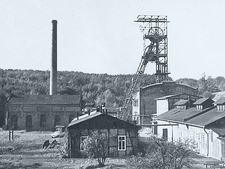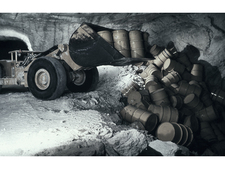-
Topics
subnavigation
Topics
What is the Asse?
- History of the Asse
- The mine
- Radioactive waste
- Influent saline solutions and brines
- The operator
What happens in the Asse?
From salt dome to nuclear repository
The eventful history of the Asse II mine
In the Asse II mine potash salt was produced between 1909 and 1925 and rock salt from 1916 to 1964. Salt production stopped on 31 March 1964. The decommissioned mine was bought by the federation in 1965 and, after a first pilot phase, was used for the storage of radioactive waste which mainly originated from facilities of today’s nuclear power plant operators. Altogether 125,787 drums and waste packages containing low-level and intermediate-level radioactive waste were emplaced in the Asse II mine between 1967 and 1978.
Salt mining
Around 1900, salt mining started on the Asse-Heeseberg mountain range north to the Harz mountains.
Altogether three mines were built in the course of time. The Asse II mine is the only facility still accessible today.
Asse I (the mine had to be abandoned in July 1906 due to flooding) and Asse III (the mine was drilled from 1911 to 1921, operations stopped in 1924) have already been flooded for decades.
1909-1925: Mining of potash salt
In Asse II, mining of potash salt started in 1909. However, for economic reasons, production stopped as early as in 1925. Until then miners had produced approximately 1,000,000 cubic metres of salt rock. The humid residues from potash fertiliser production were brought back into the mine and used to backfill the chambers.
1916-1964: Mining of rock salt
Mining of the rock salt in the southern flank started in 1916. The miners started on the 750-m level and worked their way up to the 490-m level. That way, 131 chambers on 13 levels were mined until 1964. 3.75 million cubic metres of rock salt were mined from these chambers. In the central part of the mine, additional 450,000 cubic metres of so-called Staßfurt rock salt were mined, starting in 1927.
Given that there were hardly any residues from rock salt production, the produced cavities were not backfilled.
Radioactive waste is emplaced
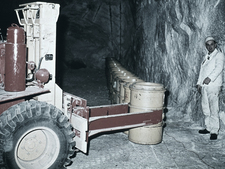
![]() Storage of drums containing radioactive waste in an upright position (1967)
Storage of drums containing radioactive waste in an upright position (1967)
In 1965, the Federal Ministry for Scientific Research and Technology (today: Federal Ministry for Education and Research – BMFT) charged Gesellschaft für Strahlen- und Umweltforschung (today: Helmholtz Zentrum München – HMGU) with exploring radioactive waste disposal in the abandoned mine. Following corresponding reconstruction, trial emplacement of radioactive waste started in 1967.
1967-1978: Emplacement of 125,787 drums and waste packages
Asse II was virtually no longer used as trial storage facility from 1971 but was used as repository for the storage of the major part of the low-level and intermediate-level radioactive waste of the Federal Republic of Germany. Until 1978, altogether 125.787 drums and waste packages containing low-level and intermediate-level radioactive waste were emplaced in the mine.
The radioactive waste was stored in altogether 13 chambers: Ten of them are located in the southern flank of Asse II in a depth of 750 metres and two in the central part in depths of 750 metres and 725 metres, respectively. Between 1972 and 1977, exclusively medium-level radioactive waste was emplaced in a chamber lying in a depth of 511 m.
Emplacement operations ended in 1978
Emplacement stopped in 1978 after the Atomic Energy Act had been amended in 1976. Now a nuclear law plan-approval (licensing) procedure was required as a condition for radioactive waste disposal.
The Mining Law continued to be the legal basis for the operation of the Asse II mine though. A decommissioning concept for the time following emplacement did not exist at that time. According to present law a decommissioning concept including the proof of long-term safety is an essential condition for licensing a repository under nuclear law.
Mining situation
During the period of salt production, numerous chambers were driven in the Asse II mine situated closely on top of each other in the south-western flank of the mine. In order to waste as little of the resource as possible, part of the salt was mined immediately up to the adjoining rock. At some places, the chambers in the salt layers reach up to five metres to the adjoining rock. Also, the chambers are sometimes only a few metres apart from each other.
Very large volume of open drifts
Today, the very large total volume of open drifts and chambers and the closeness of the chambers to the adjoining rock cause the major problem in the Asse mine.

![]() Main collecting point in a depth of 658 m prior to the change of operators (2008)
Main collecting point in a depth of 658 m prior to the change of operators (2008)
Due to the fact that the overburden is applying pressure to the mine, the chambers are pressed together. Thus the salt rock and adjoining rock loosen. Clefts have formed through which groundwater flows into the mine. Since 1988, these influent currently salt-saturated waters enter the mine in the upper part of the southern flank in depths between about 500 and 575 metres.
Moreover, the chambers themselves are becoming instable through the rock movement. Part of the intermediate roofs between the chambers have already collapsed. Uncontrolled penetration of groundwater must be feared, too.
More information on the mining situation
2009: The Federal Office for Radiation Protection becomes new operator
On 4 September 2008,
- the Federal Ministry for Education and Research (BMBF),
- the Federal Ministry for the Environment, Nature Conservation and Nuclear Safety and
- the Lower Saxon Ministry for the Environment and Climate Protection
decided to treat the Asse II mine in future as a repository in terms of legal proceedings.
Therefore the Federal Office for Radiation Protection (BfS) as the competent authority for radioactive waste disposal was to take over the operatorship of the facility from Helmholtz Zentrum München with effect of 1 January 2009. With decision of 5 November 2008, the federal cabinet cleared the way for this procedure.
Greater demands on the operation, decommissioning, and radiation protection of the facility
On January 1, 2009, operatorship changed. Since then, the BfS has been operating the Asse mine under nuclear law.
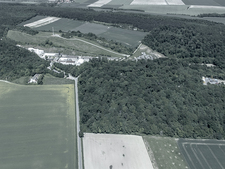
![]() Aerial view of the Asse mine including BfS information centre
Aerial view of the Asse mine including BfS information centre
Nuclear law makes greater demands on the operation, decommissioning, and radiation protection of the facility than Mining Law does. According to nuclear law, participation of the public in the plan-approval procedure for the decommissioning of the Asse mine is absolutely mandatory.
According to the amendment to the Atomic Energy Act of March 2009 the Asse II mine must immediately be decommissioned. According to the amendment to the AtG, no plan-approval procedure must be carried out for the current operation of the mine until decommissioning.
Retrieval of the waste
According to the present state of knowledge, the best variant of how to further deal with the radioactive waste emplaced in the Asse II mine is retrieving the waste. Apart from retrieving the waste, the complete backfilling of the mine and the relocation of the waste to deeper parts of Asse were examined, too.
According to the present state of knowledge, proof of long-term safety can be furnished if the waste will be retrieved.
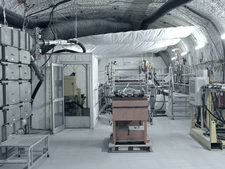
![]() Trial phase: Work area in front of emplacement chamber 7 in a depth of 750 m (2012)
Trial phase: Work area in front of emplacement chamber 7 in a depth of 750 m (2012)
Fact finding
Still existing uncertainties in terms of retrieval need to be clarified at first. This is being done by an in-depth inquiry of facts by drilling into two emplacement chambers, opening them and test-wise recovering part of the waste.
This is done to systematically answer open questions that are key to retrieval such as the radiation exposure to the operating staff.
State of 2016.11.30



